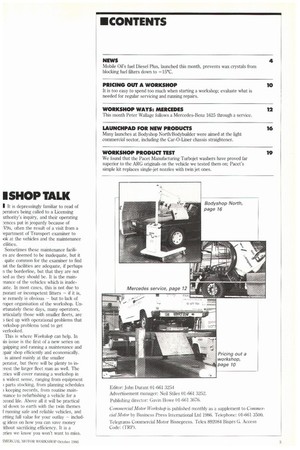ISHOP TALK
Page 111

If you've noticed an error in this article please click here to report it so we can fix it.
I It is depressingly familiar to read of perators being called to a Licensing uthority's inquiry, and their operating zences put in jeopardy because of .V9s, often the result of a visit from a epartmerit of Transport examiner to iok at the vehicles and the maintenance [citifies.
Sometimes these maintenance facilies are deemed to be inadequate, but it quite common for the examiner to find la the facilities are adequate, if perhaps ii the borderline, but that they are not sed as they should be. It is the mainmance of the vehicles which is Made;tate. In most cases, this is not due to ;norant or incompetent fitters — if it is, le remedy is obvious — but to lack of roper organisation of the workshop. Unirtunately these days, many operators, articularly those with smaller fleets, are ) tied up with operational problems that orkshop problems tend to get verlooked.
This is where Workshop can help. In Us issue is the first of a new series on quipping and running a maintenance and pair shop efficiently and economically. is aimed mainly at the smaller perator, but there will be plenty to in:rest the larger fleet man as well. The aries will cover running a workshop in s widest sense, ranging from equipment ) parts stocking, from planning schedules ) keeping records, from routine main:nance to refurbishing a vehicle for a corld life. Above all it will be practical ad down to earth with the twin themes I running safe and reliable vehicles, and etting full value for your outlay — includig ideas on how you can save money ithout sacrificing efficiency. It is a eries we know you won't want to miss.




































































































































